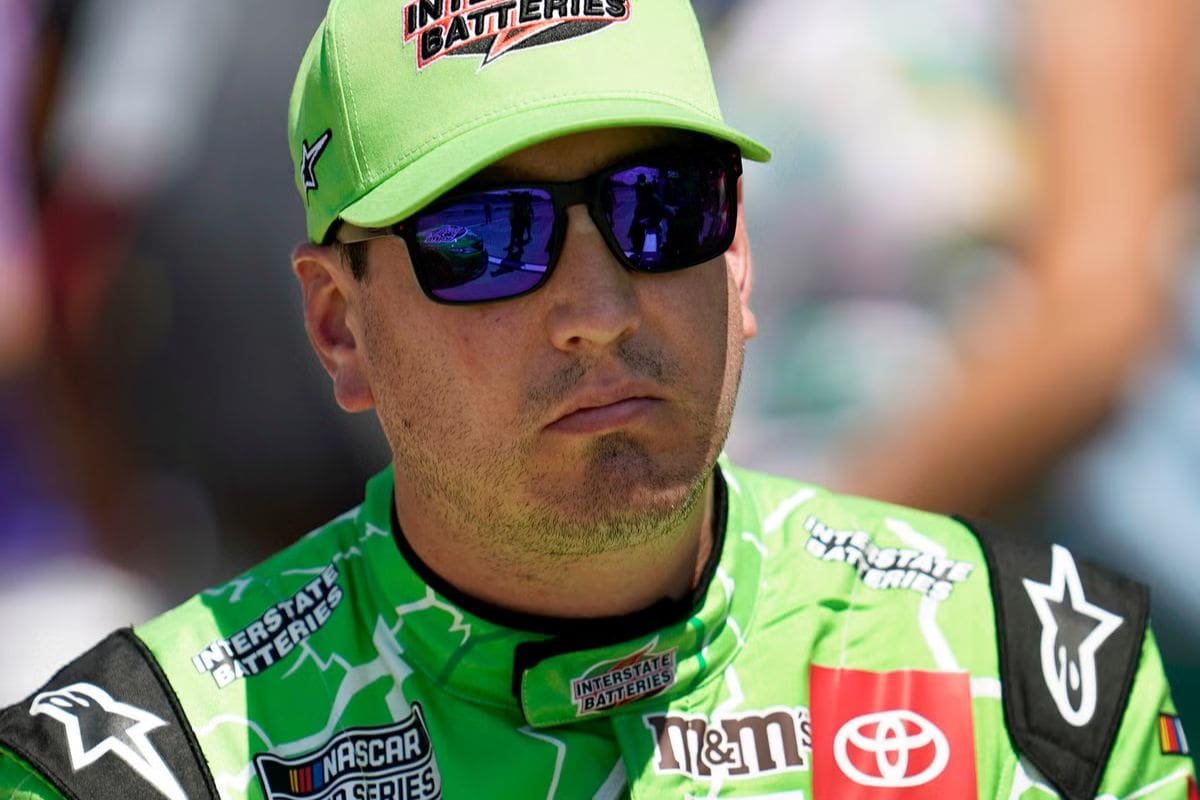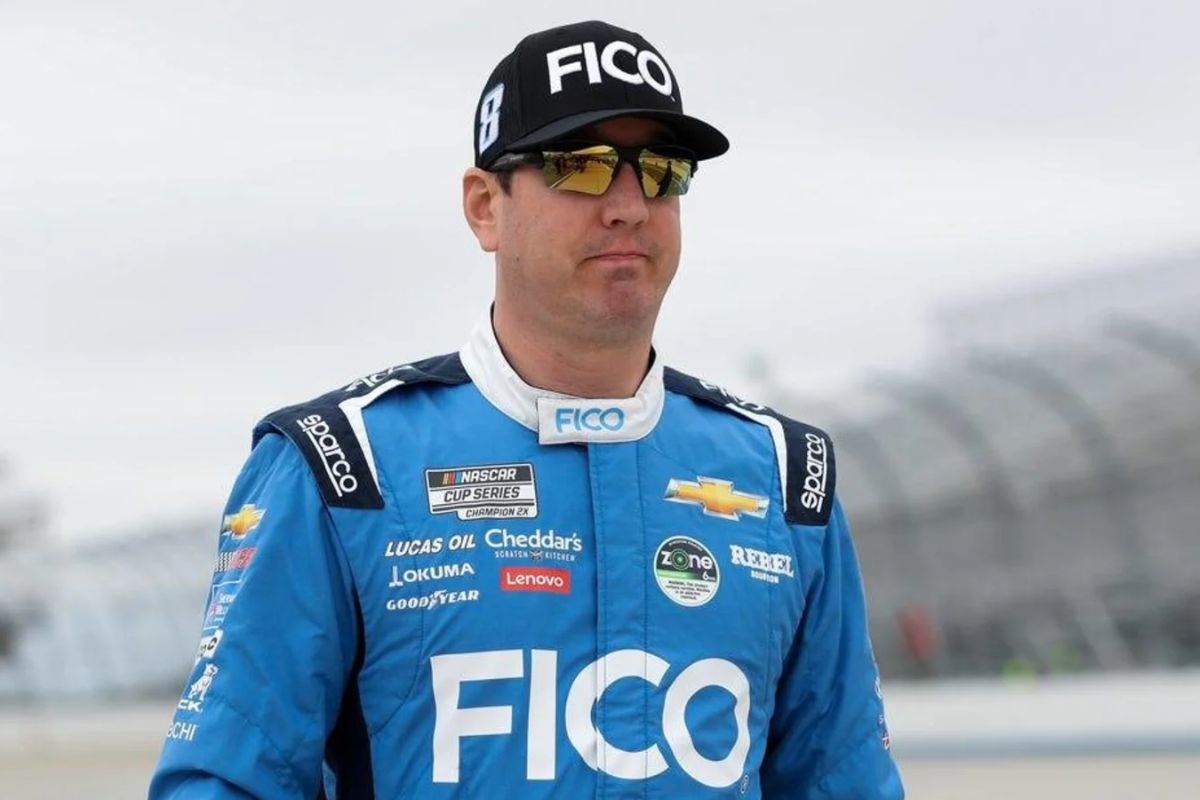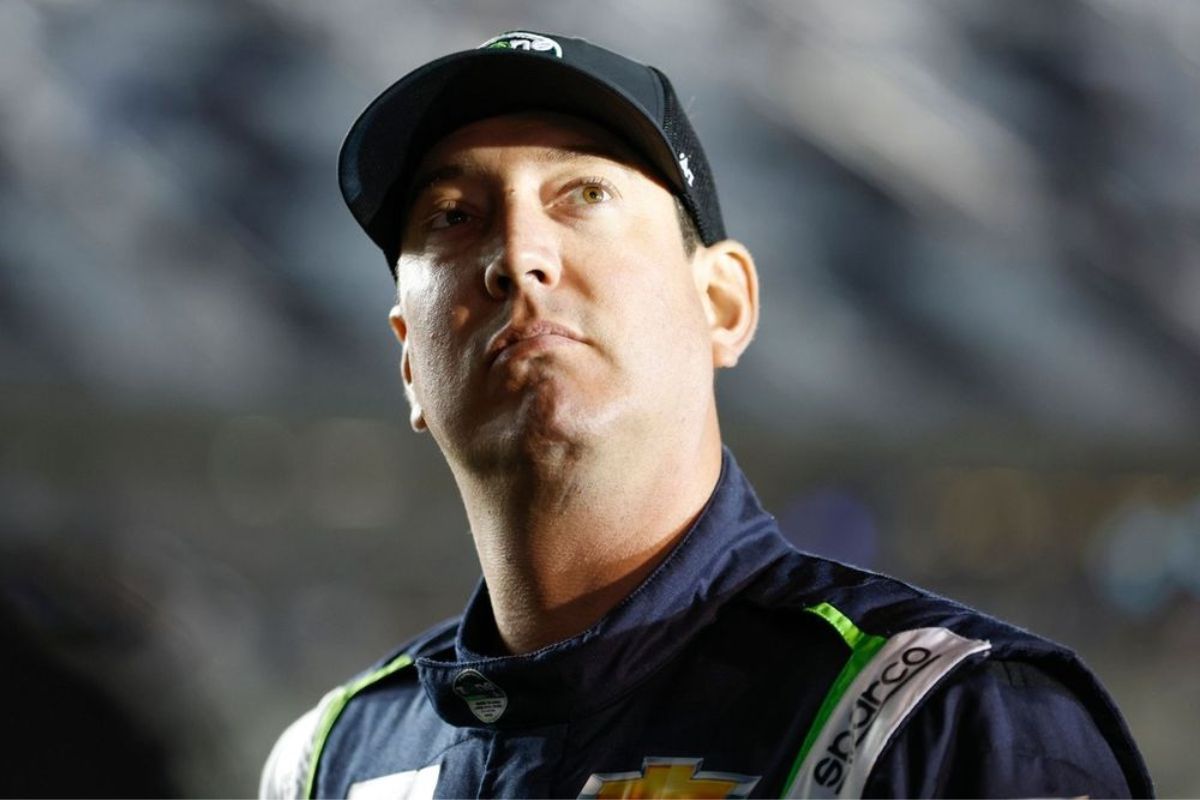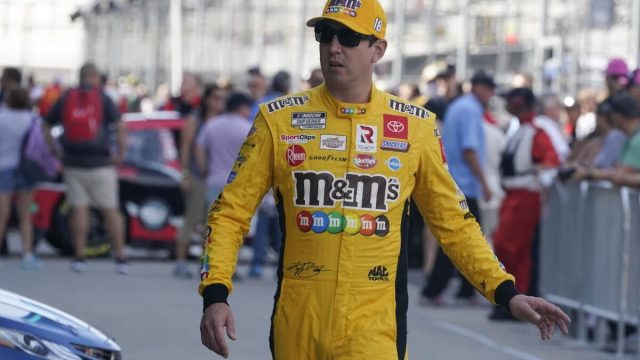Kyle Busch Admits Decline Since JGR Exit: Kyle Busch‘s recent admission regarding his performance downturn since departing from Joe Gibbs Racing casts doubt over his prospects at the upcoming Goodyear 400. This disclosure is not just a personal acknowledgment but also highlights the broader challenges that drivers are facing with the NASCAR Next-Gen car—a crucial change in the racing landscape. As Busch struggles with these adjustments, his struggle emphasizes the critical need for adaptation and strategic evolution in this new era of racing.
Key Takeaways
- Kyle Busch has struggled with the Next-Gen car’s aerodynamics and tire management since leaving Joe Gibbs Racing (JGR).
- His performance has declined, marked by difficulties in adapting to the new car’s mechanical and electronic systems.
- The unique challenges of Darlington, such as its abrasive surface and tire wear, exacerbate Busch’s issues with the Next-Gen car.
- Busch’s average finish at Darlington is 13.3, with only one win in 2008, reflecting historical difficulties at this track.
- Concerns about his ability to compete effectively in the Goodyear 400 stem from ongoing adaptation struggles and recent performance trends.
Kyle Busch’s Mixed Stats at Darlington
As NASCAR approaches the Darlington Raceway, Kyle Busch confronts a detail history on this track, marked by an average finish of 13.3 across 24 starts and a sole victory that dates back fifteen years. This record, while respectable, contrasts starkly with his more dominant performances on other circuits, highlighting specific challenges that Darlington presents to his racing style and strategic approaches.
Busch’s lone win in 2008 is a distant memory overshadowed by fluctuating performances in following years. His six top-5 finishes suggest potential that is not consistently realized, pointing towards variable factors at play during different events. The track, known for its abrasive surface and unique, egg-shaped oval layout, tests tire management and car stability—areas where Busch has historically struggled to maintain an edge over the full race distance.
Moreover, his 14 top-10 finishes at Darlington indicate a level of adaptability and resilience. However, these are not the hallmark statistics expected from a driver of Busch’s caliber, suggesting that while he can often compete at a high level, mastering Darlington requires a sophisticated approach that perhaps clashes with his aggressive driving tendencies.

Kyle Busch’s Challenges with the Next-Gen Car
Kyle Busch has openly expressed his struggle to adapt to the next-gen car, revealing a series of technical challenges that have hindered his performance in recent races. Despite being a seasoned driver with considerable experience, the adjustment to the next-gen car has been particularly challenging for Busch. This adaptation period is crucial as it impacts not only his comfort and confidence on the track but also his outcomes in races.
The next-gen car, introduced to improve competition and safety, has indeed reshuffled the dynamics among seasoned NASCAR drivers. Busch, known for his aggressive and skillful driving, has found it challenging to extract the maximum performance from this new vehicle model.
- Aerodynamic Differences: The next-gen car features distinct aerodynamic configurations that affect handling and speed, especially on tracks with high-speed corners.
- Braking System: Changes in the braking system have altered the way drivers approach corners, a critical aspect of race strategy that Busch is still mastering.
- Tire Interaction: The interaction between the tires and the track has changed, affecting grip and wear patterns.
- Suspension Setup: The next-gen car’s suspension setup demands a different tuning approach to optimize race performance.
- Feedback and Sensitivity: The car’s feedback through the steering wheel and seat has subtleties that Busch is still adjusting to, impacting his split-second decision-making during races.
Pointing Fingers at the Next-Gen Car Setup
Despite numerous adjustments, Kyle Busch continues to face significant challenges with the next-gen car setup, which he attributes to a persistent disconnect in tuning and performance expectations. Busch’s frustration highlights a broader issue within the NASCAR community regarding the adaptability of the next-gen car to varying track conditions and driver preferences. His experience, marked by a ‘new world of confusion,‘ highlights the complexity of achieving best car performance with the current technological and mechanical configurations.
The next-gen car was introduced with promises of improved competition and safety, but the shift has been anything but smooth for certain veterans like Busch. The continuous adjustments to car setups suggest a trial-and-error approach that, while necessary during early implementation stages, seems to persist beyond initial expectations. This ongoing state of flux not only impacts driver confidence but also affects their ability to consistently compete at top levels.

Busch’s Grievances about the New Car Model
Busch’s grievances with the new car model reveal a complex interplay of mechanical and aerodynamic challenges that markedly alter his racing strategy and performance. He has expressed particular difficulty with the car’s handling, which does not respond as predictably as previous models. The sensation of inconsistency especially in the front-to-rear alignment during cornering phases complicates his ability to maintain peak speed and control.
| Racing Scenario | Old Car Model Behavior | New Car Model Behavior |
|---|---|---|
| Leading into Corner | Balanced handling | Tighter when right front is outside right rear |
| Center off Corner | Stable and smooth | Looser when right front is inside right rear coming downhill |
| Maintaining Speed | Consistent and predictable | Frequent adjustments required |
| Driving in Traffic | Minimal aero problems | Significant aero problems leading to performance drop |
| Control | Easier to maintain balance | Constant wrestling with balance issues |
The increased mechanical sensitivity coupled with aerodynamic unpredictability when in traffic exacerbates the challenges. Kyle Busch’s ability to perform at his best is compromised as he navigates these new dynamics, reflecting a steep learning curve and adaptation period that he and his team are still undergoing.
Kyle Busch Opens Up About his Performances
Kyle Busch’s recent interview with Lee Spencer from SiriusXM NASCAR Radio shed light on his perspective regarding the transition from his win previous season to the challenges faced in the current one. Reflecting on the critical importance of having a superior race car, Busch highlighted the multifaceted nature of success on the track.
“I think the better piece that you have at the racetrack you know it’s going to be a lot of things it’s going to make your job easier. […] Some guys have done a better job of that.”-(kyle)
Throughout the dialogue, Busch candidly addressed the setbacks his team encountered, particularly with engine failures during crucial moments in races. These mechanical issues, occurring when they were in contention for the lead, undoubtedly dented their momentum and robbed them of potential wins.
“You know we were leading I think twice or yeah we were leading twice and had engine failures in the final races of the JGR cars. And then uh last year we were good out of the gate and had some good stuff. Then as times have changed and the setups have evolved and guys have found how to make their stuff go faster um we just hadn’t been able to do that.”-(kyle)
However, amidst the setbacks and frustrations, Busch found peace in the recent performances at Dover and Kansas. These races offered a glimmer of hope as his team showcased competitive speed once again, positioning themselves as genuine contenders. The newfound consistency with consistent top-five finishes injected a sense of optimism, hinting at a potential turnaround in fortunes.

News in Brief: Kyle Busch Admits Decline Since JGR Exit
Kyle Busch’s shift from Joe Gibbs Racing has been characterized by a significant decline in performance, highlighted by his struggles with the Next-Gen car. This scenario emphasizes the crucial need for drivers to adjust their strategies and fully leverage the technological capabilities of new car models to stay competitive.
As Busch continues to navigate these challenges, his experience serves as a key case study in the adaptation required in high-performance motorsport settings under evolving technological conditions.
Our Reader’s Queries
Q: Why did Kyle Busch leave Rick Hendrick?
A: In a 2021 interview with Graham Bensinger, Kyle Busch disclosed that the 2007 All-Star race incident, coupled with other outbursts, triggered a breakdown in his relationship with Rick Hendrick and subsequently led to his departure from Hendrick Motorsports.
Q: Did Kyle Busch lose a sponsor?
A: Throughout his 15-year tenure at JGR, Kyle Busch relied on Mars, Inc., predominantly through its M&M’s brand, as his steadfast sponsor. However, when Mars announced its withdrawal of support before the 2022 season, JGR struggled to find a suitable replacement, marking a significant shift in sponsorship dynamics.
Also Read: Rick Hendrick’s Take on EVs: NASCAR’s Manufacturer Support
